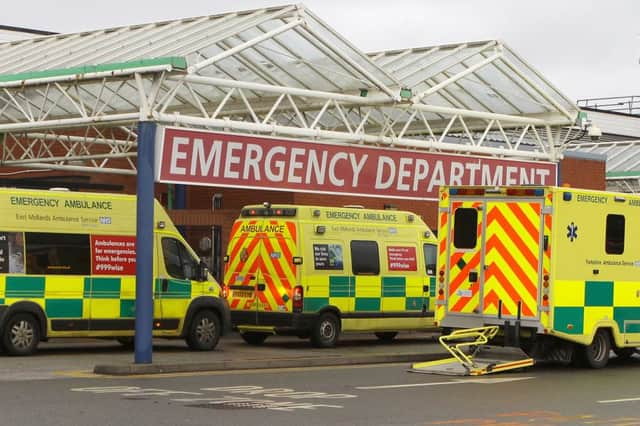More than half of UK toddler poisoning deaths caused by methadone


Methadone, the medicine used to help heroin addicts kick their habit, is the most common cause of unintentional fatal poisoning from prescribed drugs among British toddlers.
The drug accounts for more than half of all such deaths among young children and for a significant proportion of young kids’ admissions to intensive care, the findings show.
Advertisement
Hide AdAdvertisement
Hide AdIn 2013-14, the National Poisons Information Service (NPIS) received more than 14,000 calls from healthcare workers about suspected childhood poisonings, many of which related to prescribed drugs.
Certain medicines could be fatal for a toddler swallowing one or two adult doses, these include tricyclic antidepressants, anti-psychotics, quinine, calcium channel blockers - for high blood pressure, opioids, and oral hypoglycaemic drugs, which is used to treat type 2 diabetes.
Dr Mark Anderson, of the Great North Children’s Hospital, Royal Victoria Infirmary, Newcastle upon Tyne, said: “There is a need for robust and systematic recording of the medication involved and circumstances around all exploratory ingestions that result in significant harm to young children. This requires regular review to inform targeted public health interventions to avoid these tragedies.
Advertisement
Hide AdAdvertisement
Hide Ad“It is the second most common cause of drug related death in England and Wales after heroin or morphine.
“In addition, those to whom methadone is prescribed, due to their underlying condition, are potentially least able to guarantee it will not be accessible to young children.
“It is vital that before and during the prescribing of methadone, extensive efforts are made to ensure the safety of children who might be at risk of exposure.”
The researchers analysed national data on childhood poisonings and on kids’ hospital treatment and admissions to intensive care for unintentional poisoning between 2001 and 2013.
Advertisement
Hide AdAdvertisement
Hide AdDuring this period, 28 children under the age of four died in England and Wales as a result of unintentional poisoning with a prescribed drug.
The findings, which were published online in the Archives of Disease in Childhood, show methadone was the culprit in 57 per cent of these cases.
Between 2002 and 2012, some 201 toddlers were admitted to intensive care as a result of unintentional poisoning with prescribed drugs.
The research comes as a study by the University of Nottingham, published in the journal Injury Prevention, shows that teen poisonings over the past 20 years has risen by a quarter, particularly among girls.
Advertisement
Hide AdAdvertisement
Hide AdThe rises are strongly linked to social and economic deprivation, with those living in the most deprived areas of the UK two to three times more likely to poison themselves either deliberately or unintentionally as those living in the least deprived areas, research shows.
Poisoning is one of the most common causes of death among teens worldwide, with much of it related to self-harm, which is often linked to mental health problems.
Dr Edward Tyrrell, Division of Primary Care, University Park, Nottingham, said: “We must consider whether this reflects real changes, increased health seeking behaviour or changes in GP coding practices, or popular trends, such as clinicians perceiving intentional poisonings as more frequent and therefore recording events as such.
“One potential explanation for the increase in alcohol poisonings over time is increased availability, with the relative affordability of alcohol in the UK increasing steadily between 1980 and 2012, licensing hours having increased since 2003, and numbers of outlets increasing alongside alcohol harm.
Advertisement
Hide AdAdvertisement
Hide Ad“Since intentional and alcohol related adolescent poisoning rates are increasing, both child and adolescent mental health and alcohol treatment service provision needs to be commissioned to reflect this changing need.
“Social and psychological support for adolescents should be targeted within more deprived communities to help reduce the current social inequalities.”
This analysis revealed that the overall numbers of new cases of recorded teen poisonings rose by 27 per cent between 1992 and 2012.
The largest increases during this period were seen for intentional poisonings among 16-17 year old girls, and for alcohol related poisonings among 15-16 year old girls, both of which roughly doubled.
Advertisement
Hide AdAdvertisement
Hide AdBetween 2007 and 2012 almost two thirds 64 per cent of poisonings were recorded as intentional, with only 4 per cent unintentional, and some 16 per cent were caused by alcohol.
There was a clear gender divide in the poisoning rates, with the rate of poisoning in young men was less than half that of girls.
This was particularly true of intentional poisonings which were 80 per cent lower in boys and alcohol related poisonings were 10 per cent lower in young men.